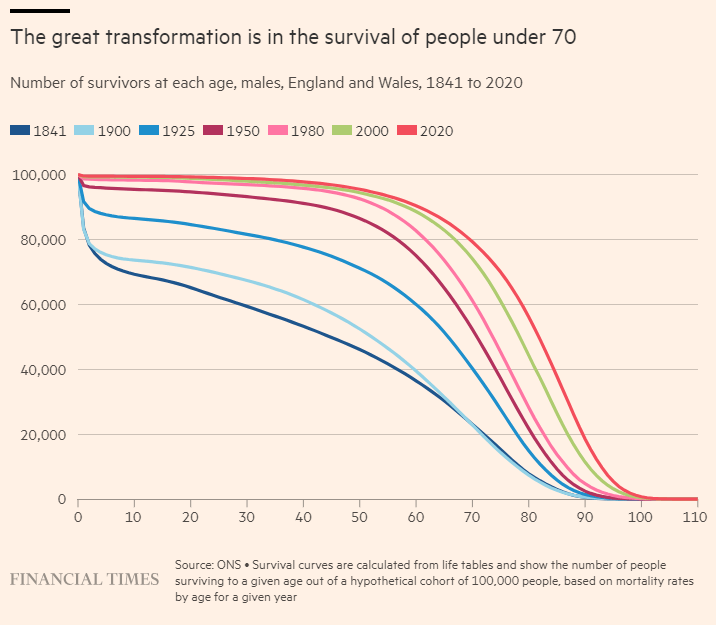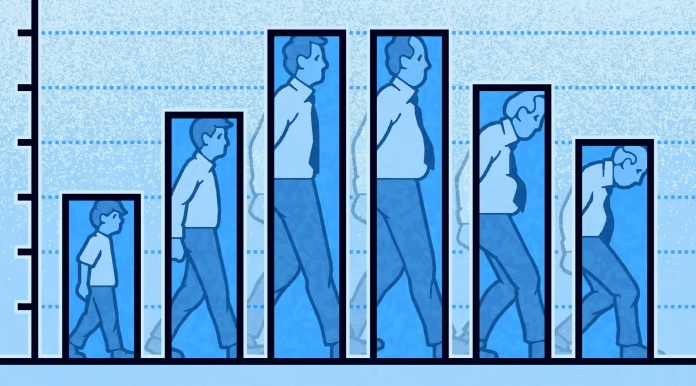This analysis delves into three contemporary articles that collectively illustrate the complexity and multidimensionality of the longevity sector.
Each article offers a unique vantage point: from the sociopolitical implications of extending human life spans, detailed by Martin Wolf, to the unconventional and personal quests within biohacking as chronicled in the adventures of Dave Asprey, and finally, the strategic dimensions of investment as articulated by Brent Hoberman during the Founders Longevity Forum.
These narratives underscore a critical juncture in the field of longevity – where the extension of life expectancy is no longer an abstract concept but a tangible reality poised to disrupt social, economic, and healthcare paradigms.
As we explore these dimensions, the articles collectively reveal how the fusion of innovative technologies with traditional health modalities is reshaping not only the way we live and age but also how societies structure their foundational systems in response to an aging population.
Through this lens, we consider the implications of these developments for policy, investment, and personal health management, providing a grounded understanding of how longevity is being redefined in the 21st century.
Longevity will bring profound social change
Wolf outlines a historical perspective, noting the stark contrast between past and present life expectancies and the dramatic decrease in young deaths due to advancements in health and hygiene. He highlights a pivotal change: while in 1965, the most common age of death in the UK was within the first year of life, today it is 87 years old, illustrating the monumental shifts in health outcomes over the decades.
Wolf argues that these advancements, while remarkable, introduce complex challenges and opportunities for society. He emphasizes that the narrative around aging must shift from viewing longer life spans as a burden to recognizing them as an opportunity to rethink and revamp our societal structures.
This includes transforming perceptions about the elderly, moving away from stereotypes of decline and dependency towards a view of continued productivity and engagement in society.

Financial Times
The core of Scott’s argument is the need to reevaluate our approach to old age. This involves not only enhancing the health spans of older adults but also integrating them more fully into societal roles that acknowledge their value beyond traditional retirement ages.
Wolf discusses potential strategies for addressing these changes, such as adjusting work patterns, education, and pension systems to support a longer, healthier life.
He proposes a model where education and work are intermixed throughout life, allowing individuals to adapt to longevity by continually updating their skills and changing their work focus as needed.
This future demands radical rethinking of policies and practices to support an aging population without falling into the trap of creating a “Struldbrugg” scenario where longer life equates to prolonged decrepitude. Wolf’s article calls for a proactive approach to aging, advocating for preventive health measures and a societal framework that supports people in not only living longer but living well.
His analysis points towards a need for comprehensive reform in how we view and manage aging, suggesting a shift towards a society that values all stages of life and recognizes the potential of its aging population.
Read the full article here.
The wisdoms of the longevity wackadoodles
Jo Ellison’s article in the Financial Times delves into the eccentric yet captivating world of biohacking through the lens of Dave Asprey, a prominent figure in the biohacking community.
Asprey, who has invested $2 million of his personal wealth into anti-aging research, represents a radical approach to extending human life. His practices, which include using unconventional supplements, participating in high-intensity workouts, and undergoing experimental medical treatments, epitomize the lengths to which some are willing to go to reverse the aging process.
Ellison’s portrayal of Asprey is critical yet nuanced, recognizing both the potential folly and the underlying wisdom in his methods.

Financial Times
While some of Asprey’s techniques may seem extreme, they are grounded in a desire to enhance physical and cognitive health, reflecting broader, time-honored principles of wellness such as diet and exercise.
This juxtaposition of the avant-garde with the traditional is a central theme of the article, illustrating how modern biohacking intersects with age-old health practices.
Ellison discusses the potential for biohacking to contribute to longevity science, particularly in how personalized health monitoring and interventions could become part of mainstream medical practice.
Moreover, the piece explores the societal fascination with and skepticism towards extreme longevity pursuits. It raises ethical and practical questions about the lengths to which we should go to extend life, especially when such methods are costly and inaccessible to most.
Ellison’s article offers a critical assessment of biohacking and its protagonists, positioning them as part of a larger conversation about health, aging, and the future of human longevity.
Read the full article here.
‘This is longevity’s moment’
The third article highlights the emerging focus on longevity as a ripe area for investment, as discussed in a piece detailing the insights of Brent Hoberman, chairman of Founders Forum.
This article, published on Longevity.Technology, captures Hoberman’s perspective on why now is the pivotal moment for serious capital to flow into the longevity sector.
Hoberman, a seasoned entrepreneur and investor, argues that the convergence of proven science, extensive data availability, and advancements in artificial intelligence has created a unique opportunity for substantive progress in extending human lifespans.
The narrative unfolds around the inaugural Founders Longevity Forum at London Tech Week, an event designed to bridge the gap between longevity science and venture capital.
This forum is not just a conference but a catalyst for accelerating innovation in the field by connecting scientists, entrepreneurs, and investors. Hoberman’s enthusiasm is palpable as he discusses the dynamic synergy of these elements and how they can drive the commercialization of longevity technologies.

Longevity Technology
Hoberman’s argument is supported by his observations of increased dialogue around longevity in global investment circles. He notes that the word “longevity” has become increasingly prevalent, indicating a growing interest and belief in the potential of this sector. This shift is part of a broader recognition that longevity isn’t merely about extending life but enhancing the quality of life as we age.
Hoberman’s insights and the initiatives of Founders Forum exemplify the kind of visionary leadership that could indeed herald a new era for longevity, transforming the way we think about and manage aging in the modern world.
Read the full article here.
Final Thoughts
As life expectancy increases and technological advancements in health continue to accelerate, investors are presented with a unique opportunity to capitalize on the burgeoning field of longevity.
Firstly, the demographic shifts discussed by Martin Wolf highlight a pressing need to adapt existing social, economic, and healthcare infrastructures to cater to an aging global population. This presents a broad range of investment opportunities in sectors such as healthcare services, age-related disease prevention, and geriatric care.
Secondly, the insights from the biohacking community, exemplified by Dave Asprey, point to a growing consumer interest in personalized health optimization. This trend underscores the potential for investments in companies developing diagnostic tools, wearable health technology, and personalized medicine solutions that cater to individual health needs and extend healthy lifespans.
Finally, Brent Hoberman’s commentary at the Founders Longevity Forum emphasizes the critical role of AI and big data in shaping the future of the longevity industry. The integration of these technologies into longevity solutions not only enhances their effectiveness but also increases their scalability, making personalized treatments more accessible.
The ability to anticipate and respond to technological developments will be crucial in identifying and leveraging the most promising opportunities in the longevity space.
“The first wealth is health.”
Ralph Waldo Emerson
Top Longevity Reads
- $1bn giveaway of longevity AI wearable (Longevity Technology)
- Global Healthspan Report (Hevolution)
- Large Biological Models have arrived (Longevity Technology)


